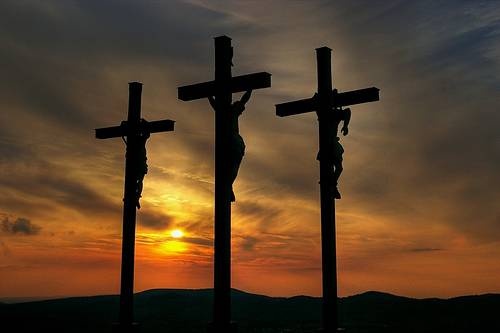|
U.S. Has World's Highest Incarceration Rate
Tyjen Tsai and Paola Scommegna
(August 2012) Since 2002, the United States has had the highest incarceration rate in the world. Although prison populations are increasing in some parts of the world, the natural rate of incarceration for countries comparable to the United States tends to stay around 100 prisoners per 100,000 population. The U.S. rate is 500 prisoners per 100,000 residents, or about 1.6 million prisoners in 2010, according to the latest available data from the Bureau of Justice Statistics (BJS).1
Men make up 90 percent of the prison and local jail population, and they have an imprisonment rate 14 times higher than the rate for women.2 And these men are overwhelmingly young: Incarceration rates are highest for those in their 20s and early 30s. Prisoners also tend to be less educated: The average state prisoner has a 10th grade education, and about 70 percent have not completed high school.3 Incarceration rates are significantly higher for blacks and Latinos than for whites. In 2010, black men were incarcerated at a rate of 3,074 per 100,000 residents; Latinos were incarcerated at 1,258 per 100,000, and white men were incarcerated at 459 per 100,000.4 Since 2007, however, the incarceration rate in the United States has tapered slightly and the 2010 prison population saw a decline—of 0.3 percent—for the first time since 1972, according to the BJS.
National Rates Mask Regional Variations
Although imprisonment rates in 2010 decreased in 34 states, they increased in 16 states, most notably Arkansas, Illinois, Iowa, and West Virginia.In the South, where incarceration rates have been historically high, the rate is almost double the rate in the Northeast (see Table 1). Recent "tough-on-crime" policies are largely responsible for sending growing numbers of people to prison in the South and keeping them there longer.5 Louisiana's incarceration rate is the highest in the nation (867 per 100,000 residents).
Table 1
Male and Female Imprisonment Rates by Region, 2010
| Total | Male | Female | |
|---|---|---|---|
| United States | 500 | 943 | 67 |
| Northeast | 296 | 577 | 27 |
| Midwest | 389 | 735 | 53 |
| South | 552 | 1,039 | 78 |
| West | 418 | 772 | 60 |
Clarification, Oct. 28, 2014:
Imprisonment rate is the number of prisoners in state or federal custody
sentenced to more than 1 year per 100,000 U.S. residents. Does not
include inmates of city or county jails or other detention facilities.
Based on census estimates for Jan. 1, 2010.
Source: Bureau of Justice Statistics, National Prisoner Statistics Program and unpublished U.S. Census Bureau Jan. 1 population estimates.
Source: Bureau of Justice Statistics, National Prisoner Statistics Program and unpublished U.S. Census Bureau Jan. 1 population estimates.
Texas ranks second in the rate of incarceration (648). But the state, as well as others with reputations for tough sentencing, have begun to control crime and costs by creating more diverse correctional systems, which include an expansion of drug treatment and changes in parole practices. Because of measures like these, BJS reported that for the first time since they began collecting jurisdictional data, releases from prison exceeded admissions to prison in the United States.6
Large Number of Black Prisoners
Blacks, particularly young black males, make up a disproportionate share of the U.S. prison population. In 2008, young black men (ages 18-34) were at least six times more likely to be incarcerated than young white men (see Table 2), according to a recent analysis by Becky Pettit, a University of Washington sociologist.7 She finds that young black males without a high school diploma were more likely to be in prison or jail (37 percent) on any given day in 2008 than to be working (26 percent).Table 2
Percentage of Male Civilian Incarceration, by Race and Education, Ages 20-34
| 1990 | 2000 | 2008 | |
|---|---|---|---|
| White Men | 1.1 | 1.6 | 1.8 |
| Less Than High School | 3.8 | 7.7 | 12.0 |
| High School Graduate | 1.4 | 2.3 | 2.0 |
| Some College | 0.4 | 0.3 | 0.3 |
| Black Men | 8.3 | 11.2 | 11.4 |
| Less Than High School | 19.6 | 30.2 | 37.2 |
| High School Graduate | 7.1 | 11.7 | 9.1 |
| Some College | 2.9 | 2.1 | 2.1 |
Source: Becky Pettit, Invisible Men: Mass Incarceration and the Myth of Black Progress (New York: Russell Sage Foundation: 2012).
Only in the last few decades has the passage into prison of young black men with little schooling emerged as routine. "For these young men, born since the mid-1970s, serving time in prison has become a normal life event," note Pettit and Bruce Western, a Harvard sociologist.8
In her new book, Invisible Men: Mass Incarceration and the Myth of Black Progress, Pettit argues that official statistics—such as employment and high school graduation rates—are based on household surveys that do not include people in correctional institutions and therefore overstate African-American progress.
"When data exclude the most disadvantaged segments of the population, they show a decline in the race gap in high school dropout rates, modest employment gains for blacks, wage increases among blacks with the lowest levels of education, and increases in voter turnout," she said.
But when people living in jails and prisons are included in the data, a very different picture emerges. Specifically, the monthly Current Population Survey of Households (CPS) shows that about 42 percent of young black male dropouts were employed in 2008. But when Pettit included inmates, only 26 percent of young black men without a high school diploma were employed on a given day in 2008.
Similarly, the 2008 CPS shows a 14 percent high school dropout rate for young black men, reflecting a decline in the black-white gap in high school completion since the 1990s. When Pettit added prison and jail inmates, the estimate of the nationwide high school dropout rate among young black men was actually 19 percent in 2008, 40 percent higher than commonly used estimates suggest.
"Including inmates in assessments of high school completion indicates no improvement in the black-white gap in high school graduation rates among men since the early 1990s," she said. Her estimates indicate that the gap in high school completion has remained close to its current level of 11 percentage points for the bulk of the past 20 years.
She argues for "better data about young, black, low-skill men as well as other socially marginalized groups, to most effectively understand patterns of and explanations for inequality in the United States."
Tyjen Tsai is a writer/editor at the Population Reference Bureau. Paola Scommegna is a senior writer/editor at PRB.
References
- Paul Guerino, Paige M. Harrison, and William J. Sabol, Prisoners in 2010 (Revised) (Washington, DC: Bureau of Justice Statistics, 2011); and Sara Wakefield and Christopher Uggen, "Incarceration and Stratification," Annual Review of Sociology 36 (2010): 387-206. Clarification, Oct. 28, 2014: There were 740,000 inmates in city and county jails and other facilities in the U.S. in 2010; about 5 percent of these were in state and federal custody. Counting the local jail population, the total incarcerated population in 2010 was about 2.3 million. See: Todd Minton, Jail Inmates at Mid-Year 2010—Statistical Tables (Washington, DC: Bureau of Justice Statistics, 2011).
- Guerino, Harrison and Sabol, Prisoners in 2010.
- Bruce Western and Becky Pettit, "Incarceration and Social Inequality," Daedalus 139, no. 3 (2010): 8-19.
- Guerino, Harrison, and Sabol, Prisoners in 2010.
- Desiree Evans, "Doing Time in the South," Institute for Southern Studies (March 5, 2009).
- The Pew Center on the States, One in 100: Behind Bars in America 2008 (Washington, DC: Pew Charitable Trusts, 2008); and Guerino, Harrison and Sabol, Prisoners in 2010.
- Becky Pettit, Invisible Men: Mass Incarceration and the Myth of Black Progress (New York: Russell Sage Foundation, 2012).
- Western and Pettit, "Incarceration and Social Inequality."





















![Polo_Grounds_Towers_at_W_155th_St,_Manhattan[1]](https://jettrubenstein.files.wordpress.com/2016/07/polo_grounds_towers_at_w_155th_st_manhattan1.jpg?w=840)






